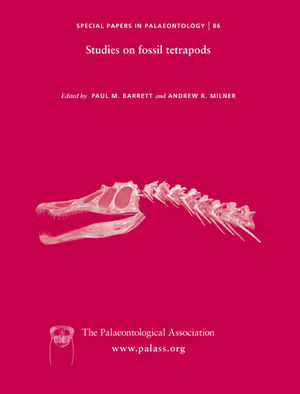Reg. Charity No. 1168330

A new data set of appendicular skeletal characters in a representative sample of fin- and limb-bearing taxa spanning the fish–tetrapod transition is used to test the phylogenetic utility of both girdle and paired appendage data. A cladistic analysis retrieves most traditional taxonomic groups, highlighting only partial conflict along internal branches that sit deep in the phylogeny, and good to moderate support for within-group branching sequences. Most of the conflict affects stem tetrapods from the Devonian, with Ichthyostega, Hynerpeton and the Catskill humerus as particularly unstable taxa. Phylogenetic constraints that reflect recent hypotheses of relationships do not entail significant differences (in terms of character fit) from the shortest trees. The data set is subjected to an analysis of trait compatibility. Results show that predefined character partitions (i.e. shoulder girdle, pelvic girdle, anterior paired appendages, posterior paired appendages and autopodium plus general features) do not reveal strong within-set correlation or any correlation with global character compatibilities. In addition, character clusters exhibit little logical and ⁄ or functional interdependence.